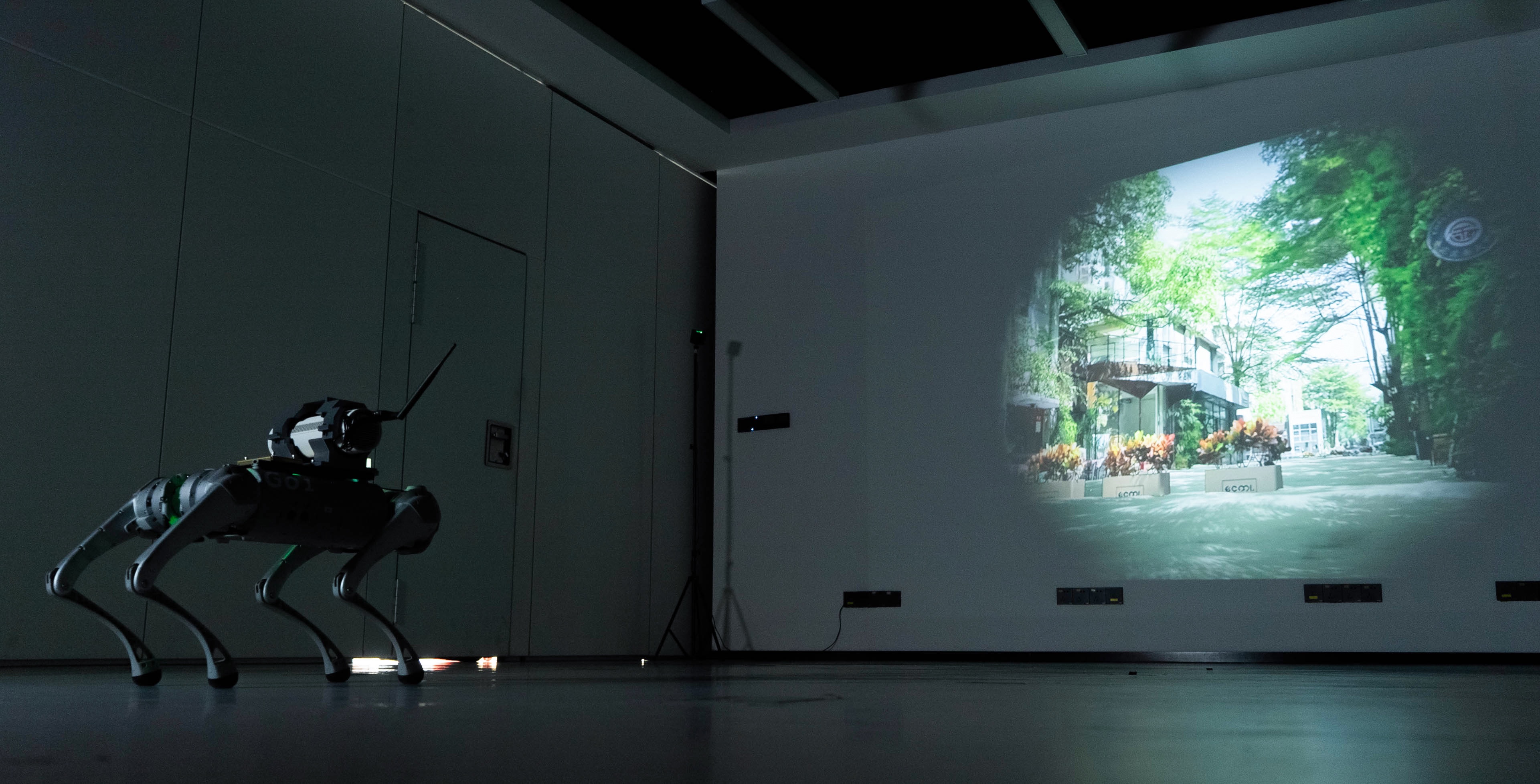Nansha, Guangzhou, September 2025 —The Computational Media and Arts (CMA) thrust at HKUST(GZ) will present five student artworks—four from CMA, HKUST(GZ) and one from HKUST—to the Ars Electronica Campus Exhibition in Linz, Austria (3–7 September 2025). Chosen from more than 20 submissions across both campuses, the pieces underwent a two-round jury led by Prof. James She and comprising CMA faculty, former Campus Exhibit student artworks, and external artists and experts.
Since 1979, Ars Electronica has gathered artists, scientists and visionaries in Linz each September to probe—and often provoke—the future through media art, digital experimentation and urgent debate on technology’s role in society. Under this year’s CMA curatorial theme “Phantom Protocols: When Machines Hallucinate in Panic”, the exhibit space in POSTCITY, Linz, Austria becomes a twilight theatre. Here, artificial intelligences murmur in half-sleep, immersive media swell and ebb like living biomes, and ecological thought is felt as a pulse within the walls. Five artworks—conjured by the thrust’s boldest master’s and doctoral alchemists—fracture the membrane between carbon and code, projecting prismatic after-images of a society yet to arrive. (Click here for our exhibit booklet)
Artworks Highlights:
1. "Drift of the Uncharted" — Ary-Yue Huang, Wenzong Ma and Bingyuan Wang, guidance by Clea von Chamier-Waite

Drift of the Uncharted is an immersive installation where a quadruped robot, evoking a robotic search and rescue agent in a speculative future world, is equipped with a projector that traverses the physical and virtual space, projecting scenes of sea-level rise onto the exhibition area, as if it were a remote agent of humanity, exploring the drowned cityscapes. This artwork critically meditate the hyperobject of climate change into an embodied reckoning, while re-scripting the robot from tool to storyteller.
2. "Algorithmic Miner" — Jia Sun and Zheng Wei, guidance by Pan Hui

Algorithmic Miner immerses participants in a virtual world where their actions—image labeling, sentiment annotation, and more—fuel the ascent of golden jellyfish toward a digital utopia. Using generative AI, symbolic metaphors, and spatial audio, the work critically examines the commodification of creativity and human agency in AI systems. It asks: Who benefits from the “invisible work” behind every intelligent machine, and what is the cost to our own autonomy?
3. "Capillary Network" — Hanlu Ma, Hengyu Meng, Robert Jankowski, Ziwei Wu, Jindu Wang and Tianrui Hu, guidance by Huamin Qu and Zeyu Wang

Invisible toxins circulate through the intertwined ecologies of life, passing through species to species. Capillary Network visualizes this interspecies transmission as a living atlas: generative veins bloom across floor-to-ceiling screens, their pulses animated by real contamination data drawn from wildlife, insects, companion animals, and humans. Approach the work, and your silhouette merges into the flow—motion-tracking grafts your body into the network, revealing how toxins bypass the boundaries of form and category, weaving all living beings into a shared and fragile circulatory system. Conceived under the guidance of Huamin Qu and Zeyu Wang, the installation transforms ecological threat into an elegiac choreography of data, engaging speculative fabulation as both method and medium. Rather than framing data solely as evidence of loss, Capillary Network opens a space for imagining kinship beyond the human: kinship not limited to lineage or affinity, but arising through cohabitation, vulnerability, and the shared imperative to survive.
4. "Machine Civilization" — Yixiong Wang, Hourun Wang, Jiaqi Shi and Yufeng Zeng, guidance by Chen Liang and Tania Fraga

Machine Civilization reimagines the dawn of civilization: many robot observers collect images and data as the “first recorder,” feeding an AI parliament where artificial agents debate, negotiate, and evolve their own symbolic language. This generative process, visualized through dynamic scripts on projection surfaces, provokes audiences to consider what happens when machines gain linguistic sovereignty—and how humanity might coexist with truly autonomous digital civilizations.
5. "Chimpanzee, Run!" — Siyuan Liu, guidance by Tengjia Zuo

Set in a near-future world on the brink of extinction, Chimpanzee, Run! lets players navigate perilous landscapes as endangered chimps. Through immersive gameplay and narrative choices, the work spotlights humanity’s role in species loss, environmental destruction, and ethical decision-making. It compels participants to question whether change is possible—or if our desires will always outweigh the needs of our fellow beings.
CMA’s Enduring Initiative: The Ars Electronica Campus Exhibit Commitment
Building a long-term constellation at Ars Electronica since year 2023, the CMA thrust of HKUST(GZ) operates as both launchpad and laboratory for radical art-tech futures. Anchored by the strategic vision of CMA thrust Head Prof. Zhang Kang and Acting Head Prof. Pan Hui, and driven by Faculty-in-Charge Prof. James She, the initiative this year fields a supportive tribunal of expertise — core faculty (Professors Theo Papatheodorou, Clea von Chamier-Waite, David Yip, Jake Zhang, Luwen Yu, Tenjia Zuo, and more), battle-tested alumni from Campus Exhibit 2024 (CMA students Jarry Yang and Jiaqi Shi) and external luminaries (artists Jieyuan and Ying Ling)—to ensure every chosen work meets festival gold-standard.
For this year’s Ars Electronica Campus Exhibition, the expedition grows: Professors Clea von Chamier-Waite and Ingeborg Reichle will accompany Prof. James She and the student cohort, bringing curatorial vision and presentation expertise to amplify visibility, ignite global networks, and propel HKUST(GZ) artists onto the world stage.
For inquiries, partnerships, or media requests, please reach out to
Prof. James She
Email: jamespmshe@hkust-gz.edu.cn
